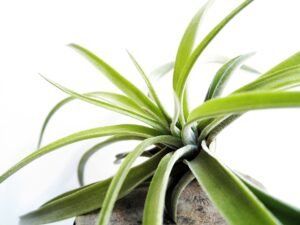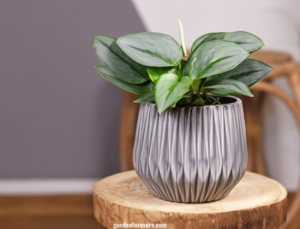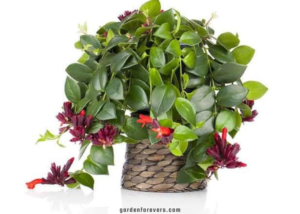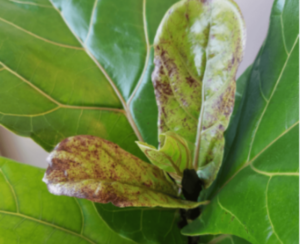How to Grow and Care for Fuchsia Flowers

Fuchsia flowers hang downwards and look like they are artificial or handmade. With a stunning contrast of royal pink and purple, these flowers are exceptionally beautiful. Fuchsia flowers greatly enhance the beauty of a garden, and gardeners highly favor them for their exquisite appearance and charm. Fuchsia is a shrub and perennial plant. Depending on the species, it can be deciduous or evergreen.
There are about 110 species of fuchsia flowers. Most fuchsias grow between 0.2 to 4 meters. In New Zealand, there is a species that can reach a height of 1215 meters. It is said that French monk Leonhart Fuchs, who was a botanist, first discovered this flower in the Caribbean islands. Later, it was named Fuchsia after the German botanist Leonhart Fuchs. Most species of this flower are found in South America, Central America Mexico, and New Zealand. Various species of fuchsia flowers are also seen in Asian countries like China, Japan, and Nepal.
About Fuchsia

How to Care Fuchsia
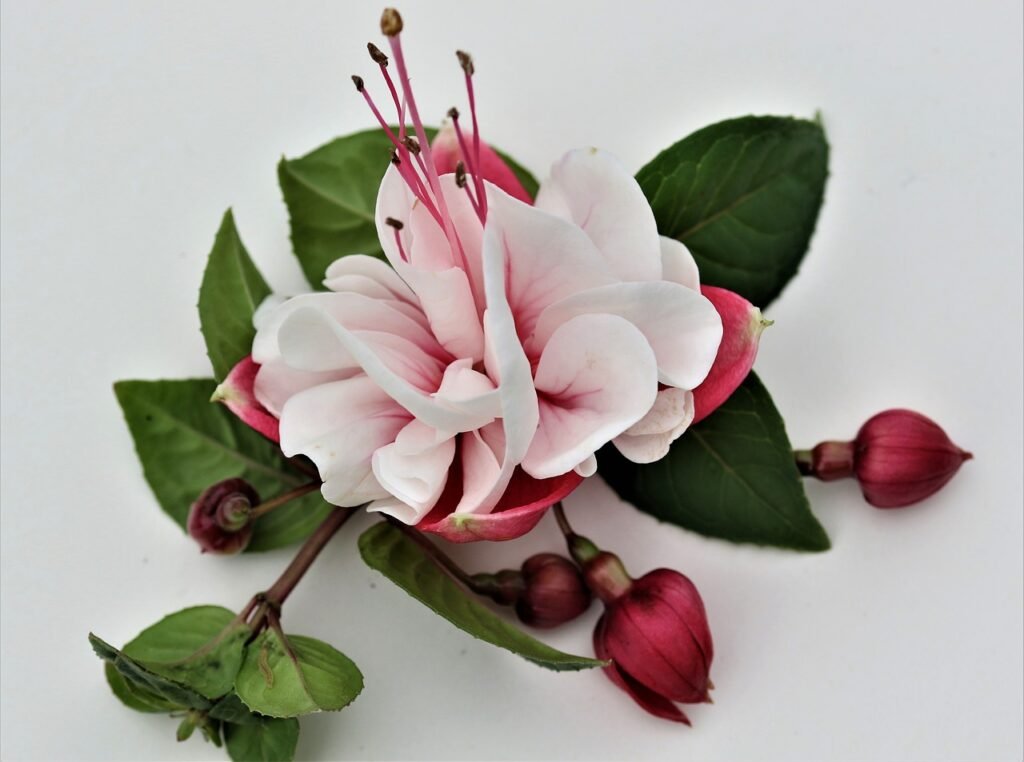
Fuchsia is a popular flower among gardeners because it is relatively easy to care for. Special attention and treatment are not required for cultivating fuchsia flowers. Gardeners grow it both indoors and outdoors. Fuchsias thrive in temperate regions without much assistance but need some care to grow well in hot areas.
Sunlight
Fuchsia plants prefer indirect sunlight over direct sunlight. They thrive in partial shade to deep shade conditions. When growing indoors, they do well with a bit more light. You can place the plant on your veranda or balcony where there is morning sun. Keep the fuchsia plant away from the harsh afternoon sun, as it can cause the flowers to drop.
Soil
The soil should be neutral. The pH of your garden soil should be between 6.0 and 7.0, and it should be well drained. Choose a spot or a pot where the soil stays moist but does not retain water. Use a mix of loamy soil, vermicompost, and ash to plant fuchsias. Keep the soil moist but not dry.
Water
Fuchsia plants like humidity. Water the plants regularly so that the soil in the pot does not dry out completely. Water twice a day in the summer. In the winter, water is based on the soil’s moisture level. Avoid watering in the harsh midday sun. Ensure that water does not accumulate.
Temperature and Humidity
Fuchsia plants can tolerate temperatures between 1227°C. There is a species that can withstand temperatures up to 32°C. Some species can even survive below-freezing temperatures. Since fuchsias prefer high humidity, if you live in a dry area, you need to keep your plants adequately moist. In winter, when the climate becomes extremely dry, indoor plants may not get enough humidity. In that case, you can use a humidifier to maintain the necessary humidity.
Fertilizer
Apply fertilizer before the blooming season. Liquid fertilizer is most suitable for fuchsias. Mix it as directed in water and apply once a week. You can choose a liquid fertilizer like Vitax Fuchsia Feed, which meets all the plant’s needs. It has a high amount of potash which helps in blooming and refreshing the leaves.
After pruning your plant, provide nitrogen fertilizer to continue growth. Many gardeners also use fish emulsion along with liquid fertilizer, which is effective in providing sufficient nutrients to the plants.
Types of Fuchsia

There are many Varieties Of Fuchsia plants, coming in various shapes, sizes, and colours. Fuchsia plants are relatively easy to care for and can grow in different conditions. They prefer partial to full shade and moderately moist soil. Depending on the species, they require varying amounts of water and fertilizer.
Fuchsia Magellanica
This variety is well-known and popular among gardeners, typically growing to 1.21.5 meters. They are suitable for temperate and subtropical regions. They can be planted on verandas, balconies, and indoors but should be placed in sunny locations. The flowers are generally long and hanging, coming in white, pink, red, and purple colours.
Fuchsia Triphylla
This variety grows to a height of 2-3 feet, with long, tubular flowers usually in red-orange or red-purple colours. Though it is a wild species from hilly areas, it is widely used by gardeners for decorative purposes. It grows well without direct sunlight and is not easily affected by pests.
Fuchsia Microphylla
Known as the smallleaved fuchsia, this variety is herbaceous and small, growing up to 1.8 meters. It blooms from September to October and attracts wildlife. The leaves are about 4 cm long, and the flowers are small, long, tubular, and pink. The berries are edible and consumed locally.
Fuchsia Boliviana

This is a medium-sized shrub growing to 2-4 meters, not exceeding 6 meters. It prefers cool climates and does not like direct sunlight or temperatures above 40°C. The flowers are typically red, long, and tubular.
Fuchsia Fulgens
An upright, shrubby variety with tuberous roots, growing 1.2- 1.5 meters or more. The leaves are heart-shaped, and the flowers are generally red, growing in dense clusters.
Pruning
Prune your fuchsia plant regularly, at least once a year, to maintain its natural growth and shape. March or April is the ideal time for pruning. Cut the plant 7-10 cm above the soil, ensuring two buds are remaining. Regular pinching helps the plant become bushy and well-shaped.
Propagating Fuchsia
Fuchsia can be easily propagated from stem cuttings, especially in spring. Follow these steps:
Select a healthy stem.
Cut a 2- 4 inch piece from the middle of the stem, just above the third bud.
Remove the leaves from the stem and dip them in rooting hormone.
Prepare a mix of sand, perlite, and peat moss in a pot.
Plant the fuchsia cutting in the mix and water it.
Cover the pot with plastic or a polythene bag and keep it in a dry place.
Roots will develop in 3 to 4 weeks, after which you can remove the covering.
Once new leaves appear, transplant the fuchsia cutting outdoors.
Growing Fuchsia from Seeds

Early spring is suitable for growing fuchsia from seeds. Mix peat moss, potting soil, and vermicompost in a pot. Spread the seeds evenly over the mix, press them lightly, and cover with a thin layer of potting soil. Cover the pot with clear, loose plastic and place it in bright but indirect light. Maintain a consistent temperature of 75°F. Once the seeds germinate, remove the plastic cover for a few hours daily to acclimate the seedlings to lower humidity. When they develop their first true leaves, they are ready for transplanting.
Repotting Fuchsia
Choose a pot larger than the previous one for repotting fuchsia. The pot size should be between 10-16 inches. Ensure good drainage in the pot. Prepare a mix of vermicompost, sand, and ash. Gently transfer the fuchsia plant into the new pot and water it. Place the pot in a well-ventilated area for 1-2 days, avoiding direct sunlight. Later, move it to a suitable environment.
Overwintering
To overwinter fuchsias, bring the plants indoors in winter and cut them back by at least half. Keep them in a cool place, such as an unheated bedroom or basement, with temperatures around 45° to 50°F. Water occasionally to prevent the roots from drying out. The leaves will drop until only the bare stems remain. In spring, take the pot outside, replace the top 12 inches of soil with compostless potting mix, and trim the branches as new growth appears. Pinch the growing tips until the first flower buds appear to promote bushier growth. Overwintering works best for fuchsias you have potted in a mix of potting soil and compost. Hanging baskets are difficult to overwinter as their soil mix dries out and does not rehydrate easily.
Common Pests
Common pests like aphids, spider mites, and whiteflies attack fuchsia plants. Use insecticidal soap to solve these issues.
How to Get Fuchsia to Bloom

Warm weather is conducive to blooming, but fuchsias take longer to flower in winter. Flowers in the sun may turn red, while those in the shade appear lavender. Pinching is essential to encourage blooming, which will occur within six weeks of pinching. Flowers typically bloom in spring and summer, with some species flowering in autumn. Tropical varieties may bloom year-round. After flowers drop, remove the dead flowers and branches to encourage new blooms. Berries, which appear after the flowers, should be cut off as they are unpalatable and can hinder growth.
FAQ
- Question: Is it possible to propagate Fuchsia cuttings in water?
Answer: Yes, it is possible to root Fuchsia cuttings in water, and many gardeners find this method particularly straightforward.
- Question: Can Fuchsia be planted in the ground?
Answer: Yes, Fuchsia can be planted in loamy soil with good drainage. There are 110 species of Fuchsia, each with different characteristics. However, ground-planted Fuchsia should be protected from the afternoon sun.
- Question: Do Fuchsia flowers have a scent?
Answer: Although there are many species of Fuchsia, all of them are scentless.



